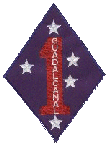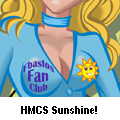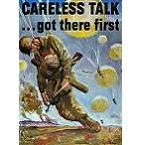akdreemer
Posts: 1028
Joined: 10/3/2004
From: Anchorage, Alaska
Status: offline

|
Well, here goes my list of suggestions.
First, all of the West Coast cities/ports need to have dedicated base forces attached at Dec 7, 1941. For instance, San Diego was home to a major Nave training base, a major Fleet base, a Marine Air Base, among others. In other words large support and administration services. San Francisco Bay area itself probably shipped over 70% of all of the beans and bullets for the entire Pacific. What I have in mind are dedicated base units similar to the ones found in India. Kind of a combination of support, engineers, and air support. Pearl Harbor should also get one by mid-1942.
Second, listed below is the standard munitions load out of american carriers at various dates during the war (Source U.S. Aircraft Carriers: An illsutrated Design History, By Norman Friedman,1983, Page 384-385)
Wartime Fleet Carriers:
Essex 1942 Enterprise Oct 1943 Bennington 1944 Bunker Hill 1945
100lbs GP Bmbs 504 504 508 300
250 " " ----- ----- ----- 50
500 " " 296 288 292 400
" SAP " ----- 288 292 60
1000 GP " 146 378 147 75
" SAP " 129 378 128 -----
" AP " 110 378 110 -----
1600 AP " 19 18 18 -----
2000 GP " 19 18 18 15
325lbs DB " 296 288 292 48
100lbs INC " 296 288 292 240
100lbs F ---- ----- ----- ----
200lbs F ----- ----- ----- 300
Torps 36 36 50 -----
3.5 AR ----- ----- 366 300
5.0 HVAR ----- ----- 4006 1700
11.72 AR ----- ----- ----- 108
Light Carriers and Escort Carriers have similar loadouts.
Several thing become apparent when viewing the above. First, US Carriers carried bombs heavier that 1000lbs, and in doing so would have the means to use them, i.e. there would have been an aircraft loadout for them. Indeed, it seems that they always had a few 2000lbr's on board. Must have used them for something other than ballast!!
Second, Although SAP and AP bombs fade from the picture late war, there is a massive increase in air lauched rockets. This appears to come at the expense of SAP and AP bombs initially, but note that in 1945 there were not any torpedoes on biard. This reflects the changing nature of the air war. As fewer Japanese naval and merchat marine ships are aflost, and carrier rainds aginst the home Islands, large AP and SAP bombs and torpedoes become superfluous.
So from the above there is a case for having loadouts on US Naval Planes for bombs heavier than 1000lbs and that there was an increased use of air launch rockets as the war progressed. Therefore I would like to see this reflected in the game...
The PBY should have sufficient range to fly from the West Coast to Hawaii, as they did it all the time during the war.
Another area that I will examine on a later posting involves endurance of naval vessels. To say the least, the current settings are much to generous. Under wartime service conditions no US Warship ever achieved "designed" endurance. Various factors that reduced endurance included split-plant steaming to limit the effects of prpulsion casualties. Build up of barnacles and other marine growth increased resistence of hulls that in turn made the propulstion system less efficient. Ships would always have some fuel on board that they could not use because of stability concerns ir possible sea-water contamination in fuel tanks ballasted with sea water for stability concerns.
getting late and have to get up early for work.. hope this is not too jumbled
|
 Printable Version
Printable Version

























 New Messages
New Messages No New Messages
No New Messages Hot Topic w/ New Messages
Hot Topic w/ New Messages Hot Topic w/o New Messages
Hot Topic w/o New Messages Locked w/ New Messages
Locked w/ New Messages Locked w/o New Messages
Locked w/o New Messages Post New Thread
Post New Thread